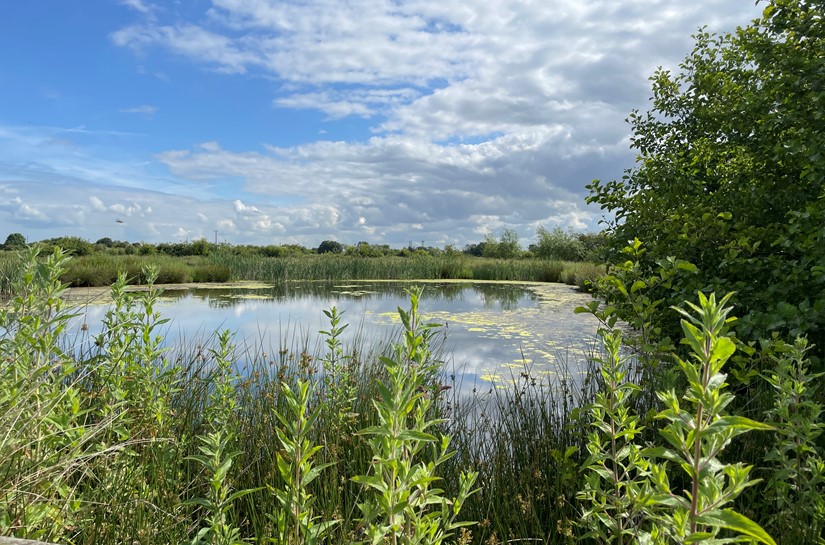We don’t know about you, but we’ve been loving the arrival of the summer sunshine in the last few weeks! And so have the wildlife species at our Protos habitats.
The Autumn and Winter saw our two purpose-built habitats - Snipe Haven and Goldfinch Meadows – provide safe havens for a variety of wonderful creatures, from barn owls and bugs to goldfinch and moorhen.
During winter, frost and snow swept across wetland fringes, with groups of teal congregating around the pond as well as other duck species – Mallard, Gadwall, Shoveler. The birds took advantage of the pre-planted wild bird seed mix, providing a valuable winter food source for farmland birds between January and March. The mix consists of millet, quinoa, fodder radish, mustard, spring wheat, buckwheat, phacelia and has proved to be a valuable resource for both pollinators and farmland birds for the first half of this year!
As the temperatures have begun to climb, we’ve seen the welcomed return of the dawn chorus, a spectacular collective of singing birds, particularly prominent during the breeding season. Fresh sprouts of plant life begin to burst through the soil, and it won’t be long before birds such as the Whooper Swan begin their migration north, back to their breeding grounds in Iceland.
In the coming months we hope to spot some really important species returning to Protos, including the sedge warbler and whitethroat – both of which are on the red list of birds of conservation concern. The sedge warbler is a small bird known for its beautiful and varied song. Its affinity for wetland habitats makes it an important indicator species for the health of these ecosystems. We’re thrilled to see this remarkable bird year on year take up residence at Protos during the warmer months.
Cheshire Wildlife Trust have reported positive signs that the water voles have managed to survive the cold, wet weather, with evidence in the form of droppings giving away their presence. Water voles typically construct burrow systems within the banks of water bodies, which they use for breeding, feeding, and shelter. These burrows, which have multiple entrances and can extend up to 20 meters in length, are commonly located near the water's edge, allowing easy access to their aquatic food sources. We’ll be keeping an eye out for these burrows popping up across the nature areas as we move into summer.
Last year we worked with Broxton Barn Owl Group (BBOG), who discovered four healthy fluffy chicks in our dedicated, pole mounted owl box. The chicks were successfully ringed, allowing us to generate information on their movements, productivity and survival, helping us to understand why populations are changing. This information is vital for conservation and identifying the many pressures faced by Britain’s birds.
The owl box is again open for business, alongside BBOG we’ll be monitoring the area, and eagerly awaiting the first sighting of a nesting owl.
Can I visit the nature areas?
You can explore Goldfinch Meadows on your own or follow one of the walking routes. Snipe Haven is an extensive area entirely dedicated to nature, with habitats created particularly for water voles and wading birds. To help protect these species, Snipe Haven is not open to the public.
Look out for the information boards with wildlife facts for all ages. The species you see will depend on the time of day and season so there is always something new to discover.
For more information on the nature areas and walking routes visit protos.co.uk/community/nature/
